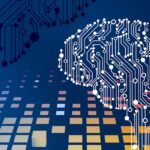The integration of artificial intelligence (AI) into education has transformed the landscape of teaching and learning, marking a significant shift in how educational content is delivered and consumed. Over the past decade, advancements in machine learning, natural language processing, and data analytics have enabled educators to harness AI’s capabilities to enhance student engagement and improve learning outcomes. From intelligent tutoring systems that adapt to individual learning styles to AI-driven administrative tools that streamline operations, the rise of AI in education is reshaping traditional pedagogical approaches.
One of the most notable developments in this arena is the emergence of AI-powered platforms that facilitate personalized learning experiences. These platforms analyze vast amounts of data to identify students’ strengths and weaknesses, allowing for tailored educational interventions. For instance, systems like Carnegie Learning’s MATHia use AI algorithms to provide real-time feedback and adjust difficulty levels based on student performance.
This level of customization not only fosters a more engaging learning environment but also empowers students to take ownership of their educational journeys.
The Benefits of AI-Guided Peer Review
AI-guided peer review represents a significant advancement in the way students engage with each other’s work. By leveraging AI technologies, educators can streamline the peer review process, making it more efficient and effective. One of the primary benefits of this approach is the ability to provide students with immediate feedback on their submissions.
AI algorithms can analyze written work for clarity, coherence, and adherence to guidelines, offering constructive suggestions that help students refine their arguments and improve their writing skills.
Traditional peer review often suffers from biases or a lack of expertise among reviewers.
However, AI systems can be trained to recognize common pitfalls in writing and provide standardized feedback based on established criteria. This not only helps students develop critical thinking skills as they assess their peers’ work but also ensures that the feedback is grounded in objective analysis rather than subjective opinion.
How AI Enhances Collaboration in the Classroom
Collaboration is a cornerstone of effective learning, and AI technologies are playing a pivotal role in fostering collaborative environments within classrooms. By utilizing AI-driven tools, educators can create dynamic group projects that encourage teamwork and communication among students. For example, platforms like Google Classroom incorporate AI features that facilitate group discussions, resource sharing, and project management, allowing students to collaborate seamlessly regardless of their physical location.
Additionally, AI can help identify optimal group compositions based on students’ skills, interests, and learning styles. By analyzing data from previous interactions and performance metrics, AI systems can suggest groupings that maximize collaboration potential. This targeted approach not only enhances the overall learning experience but also promotes inclusivity by ensuring that diverse perspectives are represented in group work.
As a result, students are better equipped to tackle complex problems collaboratively, preparing them for real-world challenges.
The Role of AI in Providing Personalized Feedback
Personalized feedback is essential for student growth and development, and AI has emerged as a powerful tool for delivering such insights. Traditional feedback methods often lack the immediacy and specificity needed to drive improvement. In contrast, AI systems can analyze student submissions in real-time, providing tailored feedback that addresses individual needs.
For instance, platforms like Grammarly utilize advanced algorithms to assess writing quality and offer suggestions for improvement based on context and intent.
By leveraging data analytics, teachers can gain insights into which concepts students struggle with most and provide targeted interventions.
This data-driven approach not only enhances the effectiveness of feedback but also fosters a growth mindset among students as they see tangible evidence of their progress.
Overcoming Challenges in Implementing AI in Education
Despite the numerous benefits associated with AI in education, several challenges must be addressed to ensure successful implementation. One significant hurdle is the digital divide that exists among students from different socioeconomic backgrounds. Access to technology and reliable internet connectivity can vary widely, creating disparities in educational opportunities.
To mitigate this issue, schools must invest in infrastructure and resources that ensure all students have equal access to AI-driven tools. Another challenge lies in the training and professional development of educators. Many teachers may feel overwhelmed by the rapid pace of technological change and may lack the necessary skills to effectively integrate AI into their teaching practices.
Providing comprehensive training programs that focus on both the technical aspects of AI tools and pedagogical strategies for their use is crucial for fostering a culture of innovation within schools. By equipping educators with the knowledge and confidence to utilize AI effectively, schools can maximize the potential benefits of these technologies.
The Ethical Considerations of AI in Peer Review
As with any technological advancement, the use of AI in peer review raises important ethical considerations that must be carefully navigated. One primary concern is the potential for bias in AI algorithms. If not properly designed and tested, these systems may inadvertently perpetuate existing biases present in training data or reinforce stereotypes.
It is essential for developers to prioritize fairness and transparency when creating AI tools for peer review to ensure that all students receive equitable treatment. Additionally, there are concerns regarding data privacy and security. The collection and analysis of student data raise questions about how this information is stored, used, and shared.
Educational institutions must establish clear policies regarding data protection and ensure compliance with regulations such as FERPA (Family Educational Rights and Privacy Act) to safeguard student information. By addressing these ethical considerations proactively, educators can foster trust among students and parents while promoting responsible use of AI technologies.
The Future of AI in Education: Opportunities and Challenges
Looking ahead, the future of AI in education presents both exciting opportunities and formidable challenges. On one hand, advancements in AI technology hold the potential to revolutionize personalized learning experiences further. As algorithms become more sophisticated, they will be able to analyze even more nuanced aspects of student behavior and performance, leading to increasingly tailored educational interventions.
However, these advancements also come with challenges related to scalability and accessibility. As educational institutions seek to implement more advanced AI solutions, they must consider the financial implications and ensure that all students have access to these resources. Additionally, as reliance on AI grows, there is a risk that human elements of teaching may be overshadowed or undervalued.
Striking a balance between leveraging technology and maintaining meaningful human interactions will be crucial for preserving the essence of education.
Best Practices for Integrating AI into Classroom Collaboration
To effectively integrate AI into classroom collaboration, educators should adopt several best practices that promote successful implementation. First and foremost, it is essential to involve students in the process by soliciting their feedback on the tools being used. Understanding their preferences and experiences can help educators tailor their approaches to better meet student needs.
Moreover, educators should prioritize ongoing professional development focused on both technology integration and collaborative pedagogies. Workshops that emphasize hands-on experience with AI tools can empower teachers to experiment with new methods while fostering a culture of innovation within their schools. Additionally, establishing clear guidelines for using AI tools in collaborative projects can help set expectations for student engagement and accountability.
Empowering Students with AI-Guided Peer Review
AI-guided peer review empowers students by providing them with tools that enhance their critical thinking skills and foster a sense of ownership over their learning processes. By engaging with peer review systems powered by AI, students learn how to evaluate their peers’ work constructively while also reflecting on their own writing practices. This reciprocal process encourages deeper engagement with course material as students become more invested in both giving and receiving feedback.
Furthermore, AI-guided peer review can help demystify the writing process for students who may feel intimidated by traditional assessment methods. By breaking down complex tasks into manageable components and providing specific guidance on areas for improvement, these systems create a supportive environment where students feel more confident expressing their ideas. As a result, they are more likely to take risks in their writing and develop their unique voices.
The Impact of AI on Teacher-Student Dynamics
The introduction of AI into educational settings has significantly altered teacher-student dynamics, creating new opportunities for collaboration while also presenting challenges that must be navigated carefully. On one hand, AI tools can free up teachers’ time by automating administrative tasks such as grading or attendance tracking. This allows educators to focus more on building relationships with their students and providing personalized support.
However, there is also a risk that reliance on technology could create distance between teachers and students if not managed thoughtfully. As educators increasingly turn to AI for assistance in delivering instruction or assessing student work, it is essential to maintain open lines of communication and foster an environment where students feel comfortable seeking help or clarification when needed. Balancing technology use with genuine human interaction will be key to preserving strong teacher-student relationships.
Case Studies of Successful AI Implementation in Education
Numerous case studies illustrate the successful implementation of AI technologies within educational settings across various contexts. One notable example is Georgia State University’s use of an AI chatbot named Pounce to assist students with enrollment processes and academic advising. By providing instant responses to common questions about financial aid or course registration, Pounce has significantly reduced wait times for students seeking assistance while improving overall satisfaction rates.
Another compelling case study comes from the University of Southern California’s use of an adaptive learning platform called Smart Sparrow in its biology courses. This platform utilizes data analytics to tailor instructional content based on individual student performance metrics, resulting in improved engagement levels and higher retention rates among participants. These examples highlight how thoughtful integration of AI technologies can lead to enhanced educational experiences while addressing specific challenges faced by institutions today.
In summary, the rise of artificial intelligence in education has ushered in transformative changes across various dimensions of teaching and learning. From enhancing collaboration through innovative tools to providing personalized feedback that empowers students, the potential benefits are vast yet accompanied by challenges that require careful consideration. As educators navigate this evolving landscape, embracing best practices for integration while remaining mindful of ethical implications will be crucial for maximizing the positive impact of AI on education’s future.









